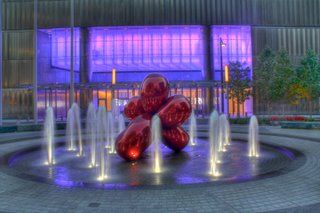




Photos by Phil - Tribeca/Battery Park City/New York City























In computer graphics and cinematography, high dynamic range imaging (HDRI) is a set of techniques that allow a far greater dynamic range of exposures than normal digital imaging techniques. The intention of HDRI is to accurately represent the wide range of intensity levels found in real scenes ranging from direct sunlight to the deepest shadows.
HDRI was originally developed for use with purely computer-generated images. Later, methods were developed to produce a HDR image from a set of photos taken with a range of exposures. With the rising popularity of digital cameras and easy to use desktop software, many amateur photographers have used HDRI methods to create photos of scenes with a high dynamic range (i.e a large difference between light and dark areas). However, HDRI has many other applications and "HDRI" should not be mistaken for just this use.
When preparing for display, a high dynamic range image is often tone mapped and combined with several full screen effects.



HDRI was originally developed for use with purely computer-generated images. Later, methods were developed to produce a HDR image from a set of photos taken with a range of exposures. With the rising popularity of digital cameras and easy to use desktop software, many amateur photographers have used HDRI methods to create photos of scenes with a high dynamic range (i.e a large difference between light and dark areas). However, HDRI has many other applications and "HDRI" should not be mistaken for just this use.
When preparing for display, a high dynamic range image is often tone mapped and combined with several full screen effects

